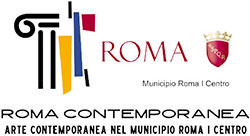A young man in a suit and tie, his hair gleaming with pomade, poses with a proud gaze. Two girls smile as they hold a 45 rpm record — a trophy from a night spent dancing the twist. A shiny Vespa, parked beside striped fabrics, becomes the backdrop for an elegant, modern portrait.
This is not Fellini’s Rome, but Bamako in the 1960s: here, Malick Sidibé captured his own “African Dolce Vita.”
The exhibition “La dolce vita africana”, hosted by Black Liquid Art Gallery in Rome (Via Piemonte 69, just steps from Via Veneto) and curated by Antonella Pisilli, creates a dialogue between two seemingly distant worlds — the Italian capital of the Dolce Vita and Mali’s capital in the midst of its postcolonial rebirth — revealing their surprising affinities.
Just as Rome was narrated by the paparazzi crowding Via Veneto, Bamako found its stage in Sidibé’s studio and in the city’s nightclubs: Cuban music, Congolese rumba, twist, and cha-cha-cha accompanied the birth of a new collective identity. Rome sparkled under camera flashes; Bamako danced under party lights.
Sidibé’s work does more than portray the carefree youth who danced until dawn. His images also hold a deeper meaning: photography as testimony of a Mali emerging from colonialism. Sidibé immortalized the birth of an urban middle class, eager to dress in Western fashion and live by the codes of modernity, yet still rooted in community values and local traditions. In this ongoing dialogue between progress and heritage, emancipation and contradiction, lies the universal significance of his gaze.
The exhibition invites the Roman public to rediscover the joyful, vibrant atmosphere of Malian youth in the 1960s and 1970s through original photographs and previously unseen materials.
Among the works on display are, for the first time, photographs from the private collection of the renowned French photographer Françoise Huguier, a passionate and attentive observer of the African continent. This rare inclusion enriches the show with never-before-seen images that deepen our understanding of the “African Dolce Vita.”
More than a photographic display, the exhibition offers an immersive reconstruction of Studio Malick, complete with striped textiles, a vintage Lambretta, and period music — a poetic homage to a space that was not just a photo studio, but a social stage where young Malians sought their best image.
Dubbed the “photographer of the African night,” Malick Sidibé captured the essence of a generation that dreamed and danced, embodying a modernity shared with the West.
In 2007, the Venice Biennale awarded him the Golden Lion for Lifetime Achievement, recognizing the universal impact of his work.
“Black and white has a stronger impact and lasts longer,” Sidibé once said. Indeed, his shots — of youth in Western clothes, couples dancing, parties by the Niger River — powerfully convey the freedom, elegance, and vitality of an era.
“Recreating Studio Malick in the heart of Via Veneto,” explains curator Antonella Pisilli, “means allowing two cities, though distant, to converse — both having experienced modernity as a celebration. The Roman Dolce Vita and the African Dolce Vita reflect one another, revealing that joy, the desire for emancipation, and the contradictions of the 1960s were a universal language.”



